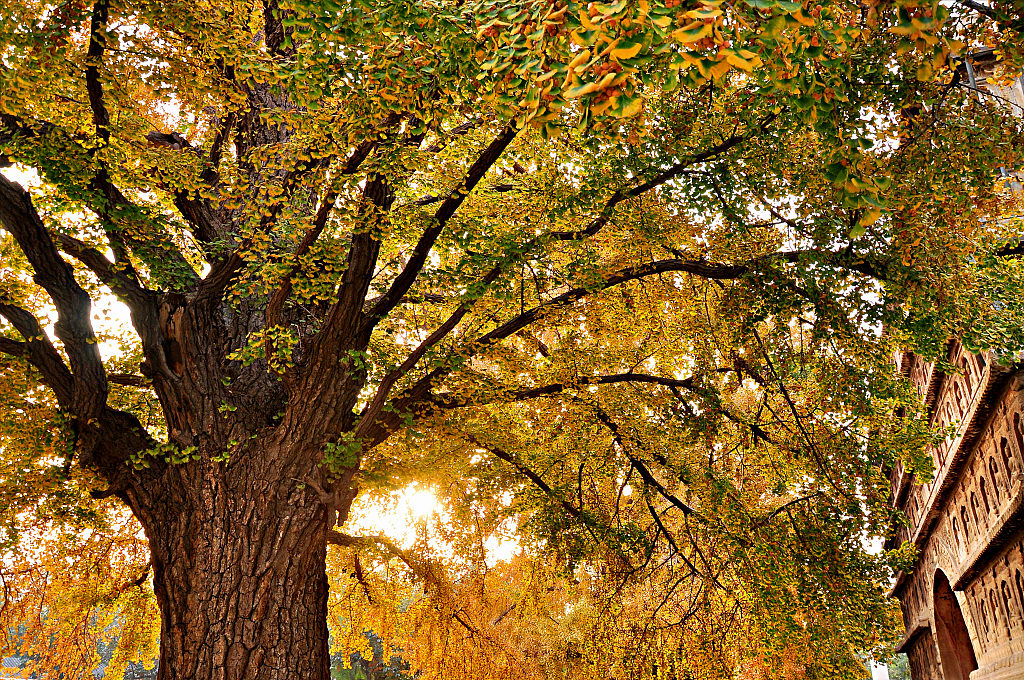
At the foot of Beijing's Western Hills, Lingguang Temple (Temple of Divine Light) draws crowds to see its sacred collection of the tooth relic of the Buddha. But the 1,200-year-old cultural heritage site also boasts a few "living treasures" – trees.
This year, Beijing has for the first time launched a government fund to protect trees that are over 100 years old.
Two ginkgoes and two pagoda trees at the temple became the first beneficiaries of the project, which was organized by the Beijing Afforestation Fund under the municipal forestry and parks bureau.
Yang Shutian, director of the fund, said that old trees can be seen as "living relics," and keeping them healthy was also "part of the work to protect and carry forward the city's history."
In April, a group of tree experts carried out a comprehensive examination of the four old trees, which were found to be very weak and on the verge of death. They soon undertook a series of rescue efforts such as filling holes, controlling pests, watering and fertilizing over the next two months. The trees are now stronger and well monitored.
According to Yang, more old trees in the city will be safeguarded through the project. It will call on more enterprises, organizations and individuals at home and abroad to donate money and materials to make up the shortage in governmental investment.
"The old trees have witnessed the city's development and played a key role in improving the city's environment. To make them healthy is our collective duty," Yang said.

An old ginkgo tree. /VCG Photo
Beijing has a large number of old trees. A survey by the Beijing forestry department in 2017 showed that the city had about 40,000 century-old trees, of which more than 6,100 were over 300 years old. The longest living tree was estimated to be 3,000 years old, almost as old as the city itself. Nearly half of these trees are distributed in historical blocks and ancient gardens.
However, about 9,000 of the trees have become endangered, due to environmental changes, natural disasters, attacks from pests and human destruction.
Some trees showed decreased abilities to absorb nutrients and to regenerate, while others were grown in poorer soil conditions. In addition, air pollution and declining populations of natural predators against pests have also weakened them.
According to the local forestry department, the annual protection cost for an old tree is between 900 yuan and 1,800 yuan. But extra efforts to rescue trees in severe conditions may cost more than 20,000 yuan a year.
In recent years, the Beijing forestry department has strengthened efforts to protect these living fossils.
It has used advanced technology including GPS and laser locators to provide accurate positions of the city's old trees. Local research institutes have bred more than 4,000 seedlings from old trees with good genes.
In addition, an adoption list of the city's 697 old trees was published earlier this year, encouraging the public to adopt and take care of old trees. Most of them are cypresses, pines and pagoda trees distributed in downtown Beijing.
(Cover image via VCG.)
(If you want to contribute and have specific expertise, please contact us at nature@cgtn.com)

Copyright © 2018 CGTN. Beijing ICP prepared NO.16065310-3
Copyright © 2018 CGTN. Beijing ICP prepared NO.16065310-3